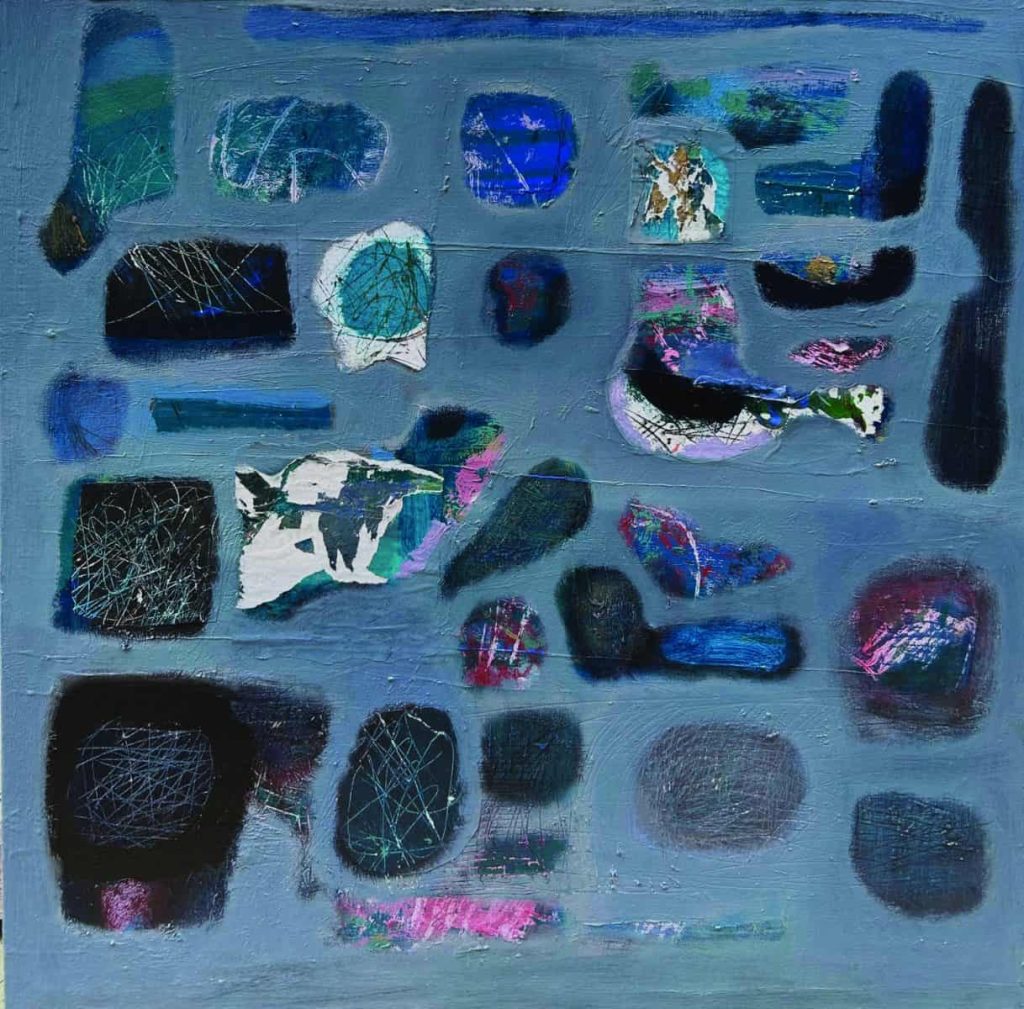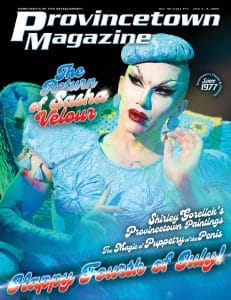One of Rigoberto Mena’s untitled 30×30” mixed media paintings that will appear in the Galeria Cubana show.
by Rebecca M. Alvin
When Cuban artist Rigoberto Mena was a child, he always loved to paint and draw, and enjoyed reading books with illustrations, in particular. Reflecting upon it now, Mena says, “I was always a sensitive child. I think I knew I was an artist when I felt sad because another child didn’t bring a snack to school. Being an artist is a way of feeling and seeing the world.”
Mena has since become an extremely successful artist, not only in his native Havana, Cuba, but in exhibitions throughout the world. And this weekend, he joins fellow Cuban artists William Acosta and Ronaldo Encarnacion in his first show at Galeria Cubana, entitled Carta blanca, or in English, Carte Blanche.

paintings that will appear in the Galeria Cubana show.
Having recently moved to North Carolina, Mena first came to the United States four years ago and lived in Miami. But he remembers coming to Provincetown once before, back in 2000 when he had been a guest artist at the Art Institute of Boston and Lesley College, and friends of his, the art collectors Stephen Mindich and Maria Lopez, brought him out here. As an abstract artist, he is well aware of the legacy of abstraction here in Provincetown, rattling off the names of artists Robert Motherwell, Helen Frankenthaler, Fritz Bultman, Jackson Pollack, and Hans Hofmann when asked what he knows of the history of this town.
The language of abstraction is difficult to write about; it is, after all, not literal and more evocative than representational. But for Mena, it is the perfect language, “the language that comes from the spirit, a language unknown to others.” Shapes and colors, line and composition—who can say what specifically it is we are responding to when we look at a piece such as Mena’s untitled pieces you see here on the page. They may evoke different things in different people, bringing up concepts, emotions, and ideas that hold unique resonance for each viewer often unrelated to their creator’s intentions, and rarely an exact interpretation can be determined.
Color is an important aspect of the work, certainly. And over his body of work, that has changed and will likely continue to shift with the artist’s interests. As he puts it, “Before I was more enthusiastic about a more austere palette, I used a lot of black and earth colors. Right now I’m excited by much more colors than I find in nature, but yes, without a doubt you can capture an emotional moment through the use of color, although color by itself does not help you to express everything you want. The gesture, the intensity, the way of placing it—delicate at times, aggressive at others, rational or intuitive is what confirms your language… like the language to express yourself from within at every moment of your life.”
While gallerist Michelle Wojcik has created a space here in town specifically for Cuban artists to show their work—whether or not they are actually able to attend their own shows, due to U.S. visa policies—Mena’s work is not only Cuban. Like any great artist, the work is capable of speaking beyond borders and cultural knowledge to reach a place inside the viewer that doesn’t need to understand Cuba or to have knowledge of it firsthand in order to respond to what appears on his canvases. “Although I am a Cuban artist, the language of my art is ‘universal’; abstraction ‘speaks’ not to be understood but to be ‘heard’ by whoever wants to anywhere. But of course I carry with me the unpainted walls of Havana, its smells, its noises, its sea…, The mouth speaks of what the heart is full says a [saying],” he explains.
Much of Mena’s work has been inspired by his urban surroundings, especially in Havana. “I lived most of my life in Havana, Cuba. The city inspired me, especially its walls full of history of brands, graffiti, unpainted or worn, showing layers of old paint,” he says and quotes Spanish filmmaker Pedro Almodóvar who said upon visiting Cuba said that there he had material for 100 scripts. “Each city I visited fills me with inspiration,” says Mena, but now, he says, “after three years living in Miami, I now live in a place full of nature in North Carolina where it has deeply affected me for good. I feel in harmony with nature and it has made me paint differently.”

paintings that will appear in the Galeria Cubana show.
Still, being an artist in the United States is a far different experience than one has in Cuba. Being an artist here is complicated by economic realities in a way that it just isn’t in Cuba. “When American art collectors visited me [in my Havana studio] and they asked me, ‘Do you live from art?’ I always told them yes. At that time I did not understand the essence of the question, I understood it when I decided to live here. Living from art here is a feat. To get here and be able to live from my painting has not been easy. The difference between being an artist in Cuba and here is abysmal; an artist living in the United States has to ‘put his feet on the ground’ and pay the bills each month. In Cuba he did not pay rent, he was a millionaire,” explains Mena.
But life in Cuba is not without difficulties for artists. “The tempo in Cuba is slow, nobody seems to have a plan for the future. In Cuba right now the artists have other problems, lack of materials to work with, among many [other issues]. Money is also needed there today because life has become more expensive to unsustainable levels,” he explains. And yet, he says, “To be honest, despite everything—and I feel it more now that I live in North Carolina—my abstract work makes me feel like I am in the land of my ancestors.”
An exhibition of works by Rigoberto Mena, William Acosta, and Ronaldo Encarnacion will be on view at Galeria Cubana, 357 Commercial St., Provincetown, August 31 – September 11 . Mena and Encarnacion will both be in attendance at an opening reception in the gallery on Friday, September 1,6 – 9 p.m. For more information about the exhibition call 508.487.2822 or visit lagaleriacubana.com.






